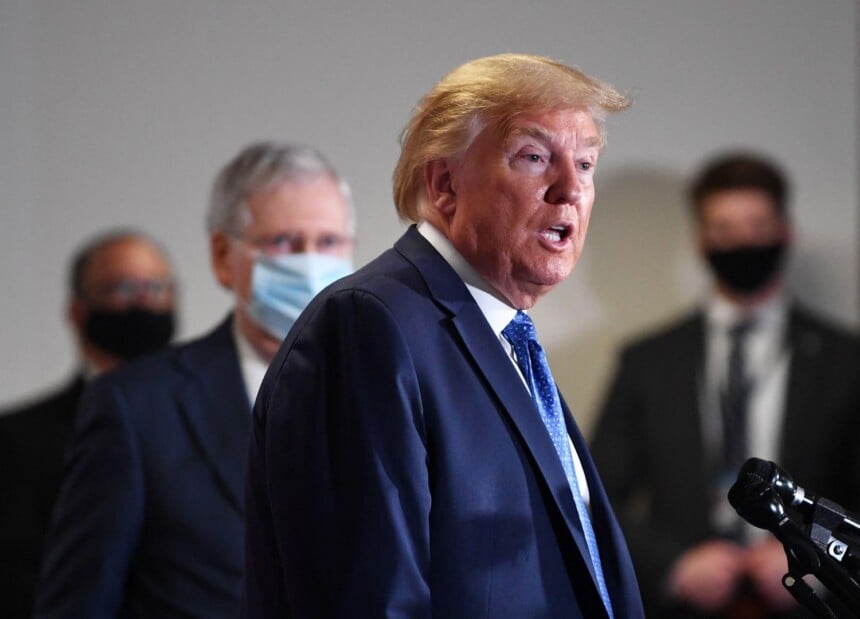Donald Trump has a better track record of avoiding economic downturn than any Republican president since the GOP was founded in 1854. “A trough in monthly economic activity occurred in the US economy in April 2020,” a National Bureau of Economic Research (NBER) panel announced in July. “The previous peak in economic activity occurred in February 2020.” In other words, Trump missed avoiding the economic curse of recession shared by 17 of his 18 Republican presidential predecessors by a mere two months. Only James Garfield, who served as president for less than a year thanks to an assassin’s bullet, had a shorter incidence of recession during his tenure than any Republican.
Political media defines recession as two consecutive quarters of negative GDP. The NBER panel’s definition is broader and considers “three criteria—depth, diffusion, and duration”—that “needs to be met individually to some degree.” The NBER panel considered monthly coincident economic indicators and quarterly estimates of inflation-adjusted gross domestic product and gross domestic Income (GDI) in making its decision. The coincident indicators are nonfarm payroll employment, industrial production, real personal income less transfer payments, and wholesale-retail sales. “All of those indicators clearly point to April 2020 as the month of the trough,” the panel noted, further declaring that the widespread and severe economic drop made it eligible to “be classified as a recession even if it proved to be quite brief.”
Trump left office in January having co-presided over the longest economic expansion in the NBER chronology—128 months—which started in June 2009 under his predecessor, Barack Obama. The previous record was 120 months, occurring between March 1991 and March 2001 under George H.W. Bush and Bill Clinton, and ending early in George W. Bush’s first term. Three recessions occurred in the 12 years that Bush père and fils served as president, with the pair recording a higher incidence of recession than Trump: 29 months, or nearly 2 1/2 cumulative years during their tenures.
Recessions are nonpartisan. Using the NBER chronology to compare presidential terms with recessions, every Democratic president except Lyndon B. Johnson and Clinton served during a recession. Woodrow Wilson presided over the longest 20th Century recession under a Democrat. He entered the White House two months after a recession started in January 1913. It ended 24 months later in December 1914. A second, shorter recession lasting seven months occurred under Wilson from August 1918 to March 1919.
In sum, Trump served during the longest economic expansion in U.S. history, and presided over a shorter recession than all but one of his Republican predecessors. Trump’s critics aren’t likely to note these positives, though future historians are likely to view them as part of his economic legacy.
Image Credit:
President Donald Trump speaks to reporters after attending the weekly Senate Republican luncheon on Capitol Hill in Washington, DC on Tuesday, May 19, 2020. Trump met with the Senators to discuss the progress of safely opening up America and economic recovery. (Photo by Kevin Dietsch/Pool/ABACAPRESS.COM)

Leave a Reply